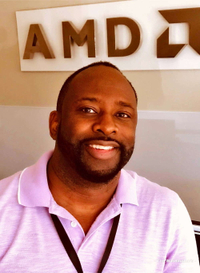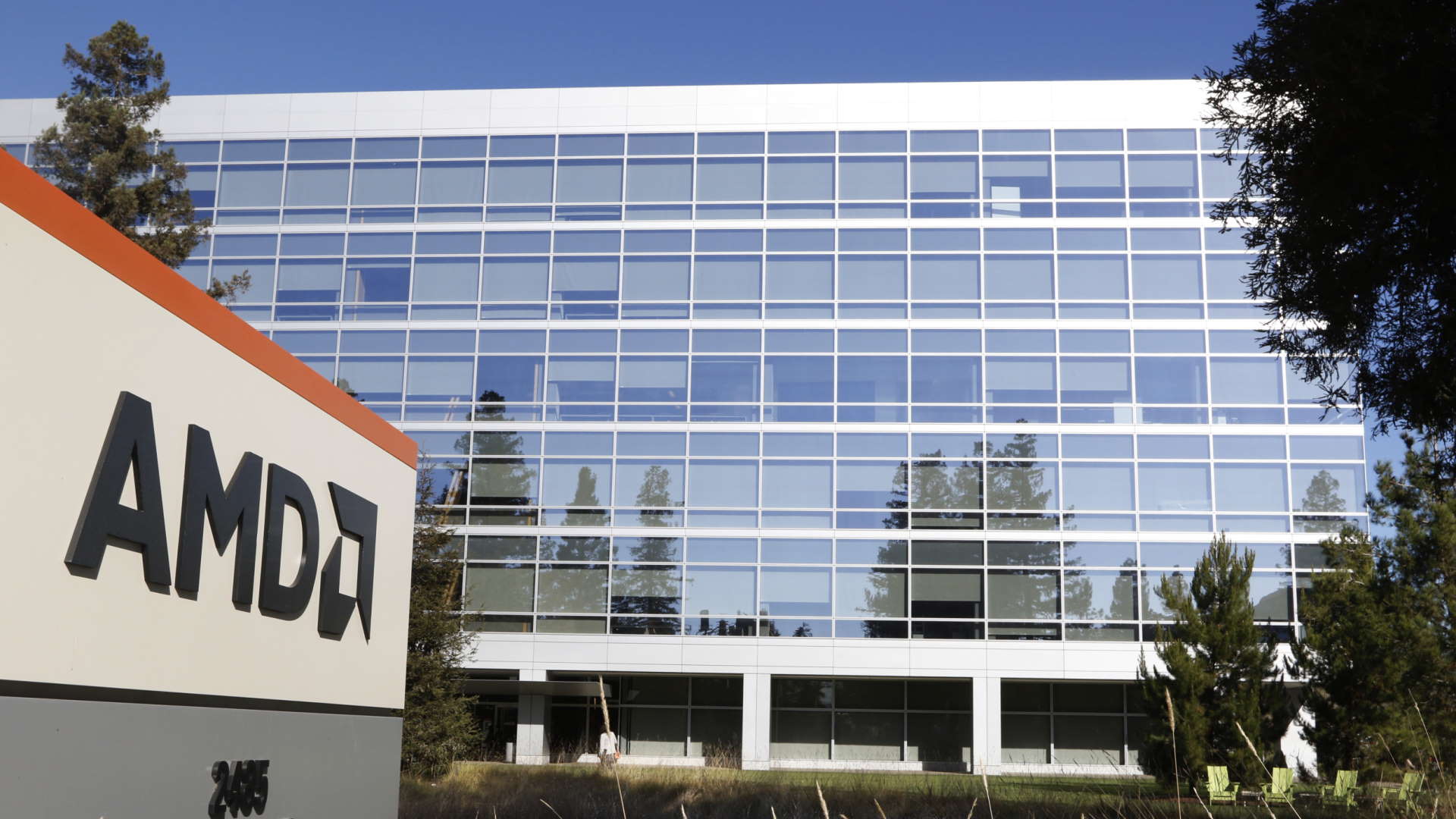Black History Month: Why diversity is vital in AMD, 'we know that diverse workforces spur innovation'
We've been speaking with leading Black voices within AMD.

As part of our celebration of Black History month, we've been speaking to some of the leading voices from within the biggest companies in the PC gaming tech world. Having spoken with two Intel veterans earlier in the month, today we're talking with two AMD veterans from the resurgent CPU and GPU giant.
Lamar Washington and Doug Lane have been part of the company for many years and have each played their part in the turnaround in AMD's fortunes from their respective positions.

Critical Environment Manager, AMD
I have been in the data center facilities industry field for over 18 years with prior military technical background. In 2012, I landed a Data Center Facility Manager position serving as the facilities service provider for AMD’s North America data center located in Atlanta, GA.
Under a year and half of meeting AMD’s customer service satisfaction and expectations; I was blessed and offered an AMD position as the site’s Critical Environment Manager over the data center in 2013.
Design Engineer, AMD
I begin my career working at a Telecommunications startup by the name of Thomas Conrad Corporation. I worked there as a bench tech debugging Token Ring, Arcnet, and 10/100 ethernet products. This was the late 80’s and early 90’s, so networking products were still in their early stages of development. There, I worked on many different products which provided opportunities to learn and develop my troubleshooting skills.
I eventually moved to In-circuit test development, which was a skill in high demand at the time. I did contract work at night for 3M developing in-circuit test programs and eventually moved to National Instruments (NI) to work as their lead In-circuit test developer. NI was, and probably still is, a great company for young Engineers to work and get exposed to exciting new products and technology. This is the company where I was first introduced to C programming and developed many programs in C to test NI’s data acquisition and instrumentation products.
After NI, I moved to Compaq Austin and used my C coding experience to develop and debug NDIS based NIC drivers. After Compaq, I took a job at 3Com where I developed tests in C++ and VHDL to test a simulated 10/100 Ethernet MAC. This was my first exposure to simulated hardware development, which is the field that I still work in at AMD.
Were there any specific engineers, inventors, visionaries, or people in your own life who inspired/still inspire you?
No matter what unforeseen obstacles that may come my way, just keep believing in yourself.
Lamar Washington
Lamar Washington: One of my biggest inspiration was the works of African American inventor Granville T. Woods (1856-1910). Woods left school at age 10 and began working in a machine shop. He eventually received training in electrical and mechanical engineering and invented 15 appliances for electric railways including a power pick-up device in 1901, which is the base foundation called "third rail" currently used by electric-powered transit systems.
For this individual to have such determination and knowledge during that time of racial injustice among African Americans was simply unprecedented. The thought of these achievements provides me confidence and motivation to achieve any personal dreams or goals I may have; no matter what unforeseen obstacles that may come my way, just keep believing in yourself.
Doug Lane: There were a few engineers and people who inspired me throughout my career. When I entered the Hi-tech industry, I only had a one-year certificate from ITT technical institute in electronics technology, but because of my early influencers, I continued my education.
The owner of the startup was Walt Thirion, he spent time with me and other technicians coaching us on debug methods and troubleshooting techniques. I remember he would always say, "you should learn something new every day, never stop learning."
Another person who was a big influence was Jerry Newman. Jerry was one of the lead designers at Thomas Conrad and was working on his bachelor's degree in Computer Science. Because of Jerry, I decided to enroll in the local community college and continue my education. I eventually went on to earn an Associate of Science in Engineering degree and a bachelor's degree in Computer Science. I’m currently working on my MBA and have two semesters left to complete the degree.
The biggest gaming news, reviews and hardware deals
Keep up to date with the most important stories and the best deals, as picked by the PC Gamer team.
Another great influence was my first manager at AMD, Heather Hanson. Her approach to leadership and problem solving is reminiscent of my managers and engineers at Thomas Conrad. She is very knowledgeable of the products, has technical foresight, has breadth, and depth of knowledge of the business and product development life cycle, and navigates the team around potential issues and roadblocks.
Another great influence was my dad. He was always learning how to do new things and made great accomplishments in his life with little to no formal education or training.

What are the biggest challenges facing diversity in tech today?
Lamar: The diversity gap in tech. We see from public records through D&I reporting that the industry still has a long way to go to close the gap based on many companies reporting low diversity rates.
It is more important than ever for tech companies to prove their commitment to closing the diversity, as well as gender gap.
Lamar Washington
While disappointing, we must work collectively as an industry to focus on improving these statistics because we know that diverse workforces drive superior business returns and spur innovation. One roadblock on the path to closing the diversity gap is the extreme geographic concentration of tech companies, which limits the ability to connect with, recruit, and retain talent from a widely dispersed pool: particularly within the Black, Hispanic, and Latino communities in the US.
I believe it is more important than ever for tech companies to prove their commitment to closing the diversity, as well as gender gap in the tech industry. I have some confidence that tech companies will be responding with more substantial policies than before to tackle these issues of diversity.
Doug: I believe the biggest challenge facing diversity in tech is college and universities’ inability to attract diverse students into their engineering and computer science programs.
If there were more diverse students in these programs, not only would it help increase the number of diverse candidates in the pipeline ready to enter a career in high tech, but it would also assist in breaking down barriers caused by implicit and unconscious bias in tech companies.
Are there any resources, talks, or books you'd recommend to aspiring technologists?
Lamar: I would recommend the book "The Future is Faster Thank You Think" by Peter Diamandis and Steven Kotler. Great book!
Doug: Resources I would recommend to aspiring technologists are magazines like Wired, PC Magazine, and Popular science.
We are PC Gamer, so we have to ask, do you play games?
Lamar: Yes, definitely! Some of my favourites are Madden 21, NBA 2K21, and Marvel’s Spiderman: Miles Morales and the Far Cry series.
Doug: I currently don’t play video games, but when I was in high school, I had an Adam computer that served both as a gaming console and a computer console with a Basic programming language compiler. I used the computer to write basic programs and to create a Dungeons and Dragons game.

Dave has been gaming since the days of Zaxxon and Lady Bug on the Colecovision, and code books for the Commodore Vic 20 (Death Race 2000!). He built his first gaming PC at the tender age of 16, and finally finished bug-fixing the Cyrix-based system around a year later. When he dropped it out of the window. He first started writing for Official PlayStation Magazine and Xbox World many decades ago, then moved onto PC Format full-time, then PC Gamer, TechRadar, and T3 among others. Now he's back, writing about the nightmarish graphics card market, CPUs with more cores than sense, gaming laptops hotter than the sun, and SSDs more capacious than a Cybertruck.

